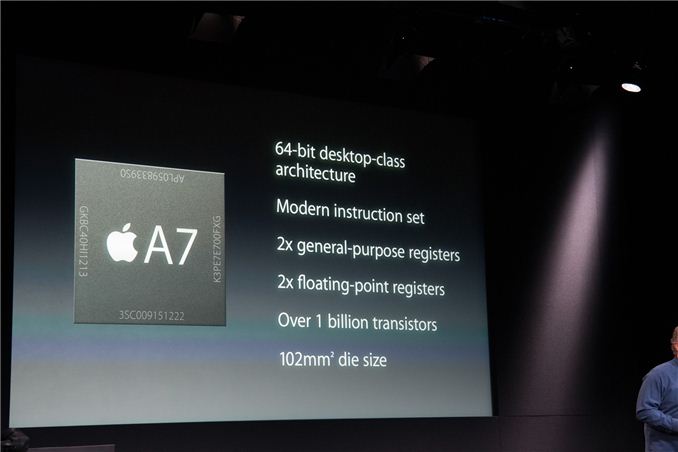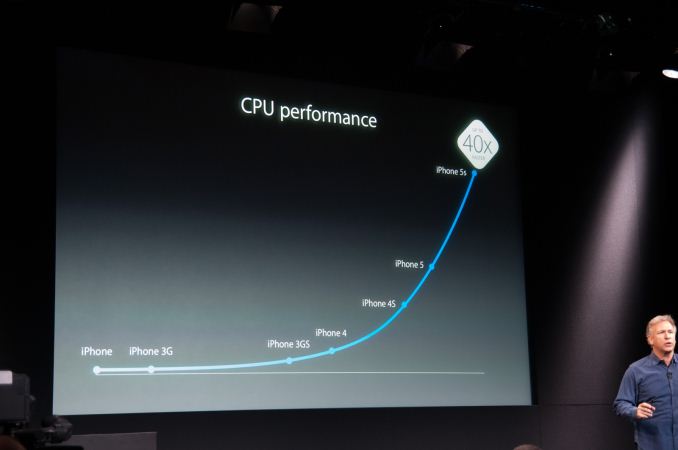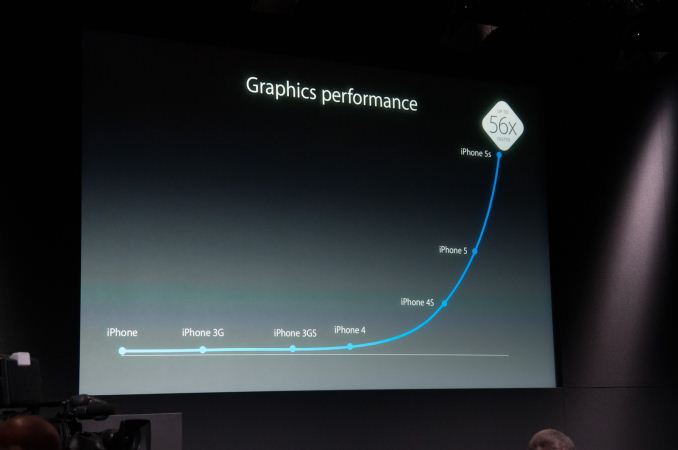Apple Announces A7, World's First 64-bit Smartphone SoC
by Anand Lal Shimpi on September 10, 2013 1:36 PM EST- Posted in
- Smartphones
- Apple
- Mobile
- SoCs
- iPhone 5S

Apple just announced the iPhones 5S featuring the A7 SoC, which is the world's first consumer ARM based SoC with 64-bit support. We're likely talking about an updated version of Apple's Swift microprocessor with ARMv8 support.
Check out our full coverage of Apple's Town Hall event in our live blog.












91 Comments
View All Comments
madmilk - Tuesday, September 10, 2013 - link
x86-64 is fully capable of 64-bit computations, whoever told you otherwise is wrong.madmilk - Tuesday, September 10, 2013 - link
Huh, that's strange. That comment shouldn't have ended up here.danbob999 - Tuesday, September 10, 2013 - link
most transistors are in the GPU part. A recent Nvidia GPU has over 7 billion.garadante - Tuesday, September 10, 2013 - link
Again the 1,4 billion transistors in Haswell also includes GT2 I think? It's kind of hard to tell with the transistor count article here on Anandtech. Either way, the die size for GT2 is roughly 177 mm^2, which isn't ~that~ much larger.tipoo - Tuesday, September 10, 2013 - link
The CPU cores in these SoCs is actually a minority of the transistors though. The rest is uncore, GPU, etc.garadante - Tuesday, September 10, 2013 - link
The 1.4 billion transistor count and 177 mm^2 die size for Haswell is for a 4 core CPU with GT2 graphics, which I imagine are significantly more powerful than what's on this chip. The power consumption would be much higher, but I'm just saying, as large as this die is and as quickly as it's approaching the die size of desktop processors, pricing is going to go up up up.michael2k - Wednesday, September 11, 2013 - link
You forget that Apple's current SoC cost is something like $11 to $15 dollars.Going 'up' means $25 dollars.
Compare that to Haswell, where the cheapest mobile part is something like $200 or $150.
Even Atom costs something like $35.
extide - Tuesday, September 10, 2013 - link
Can't wait for the deep dive of this CPU, and the CPU in the 5C. Sounds like the A7 is built on 28nm HKMG, and I assume it implements armv8, of course. I wonder if the A6 in the 5C is re-spun on 28nm also, similar to what they did with the 32nm transition.Stuka87 - Tuesday, September 10, 2013 - link
With the transistor count, and that die size, there is no way its 28nm. I would bet money its 22.leecbaker - Tuesday, September 10, 2013 - link
Isn't Intel the only company with a fab currently making SOCs at a process that small? I'm still betting on 28nm.